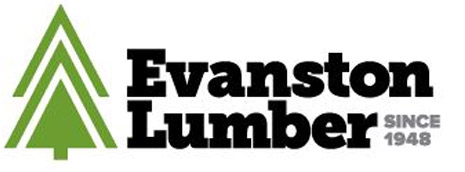
4 Must-Haves for Generating High-Quality Remodeling Leads
Let me guess. You need more remodeling leads.
If you tried digital marketing in 2015, you likely employed a combination of:
- email marketing
- social media
- website re-design
And let me guess: few of the “leads” you received from these marketing initiatives turned into revenue-generating jobs.
You’re not alone.
Several times a week, we hear from remodelers across the country who reference an SEO expert here, an email marketing guru there, whose ideas all sounded great, but in the end, the results just weren’t there. They’re understandably frustrated by wasted marketing dollars, and they often wish for the “good old days” when business ran smoothly on referrals. They’re quick to acknowledge, however, that even referrals don’t quite work the way they used to.
In this article, I want to offer some practical ways you can begin creating high-quality leads in your currently existing marketing efforts. I also want to offer our first-hand observations on what it takes to be a successful remodeler both online and with customer referrals.
See Yourself as an Educator First, Remodeler SecondTwenty years ago remodeling clients chose their remodeler based on a few, simple options: they received a referral from a friend; they saw a listing in the Yellow Pages, or they received a direct mail flyer. Most, if not all, of these remodeling clients, were directly educated by a local remodeler.
When the Internet came along, things changed drastically. Fast forward to 2016, and most of the buying/educational process is self-directed. That means:
Clients aren’t letting you educate them one-on-one anymore. They make buying decisions based on independent research.
One of the primary reasons that a lot of remodelers are frustrated by their social media and website leads is because they have no way to gauge where that person might be in the sales cycle. Because consumers prefer a self-educated buying process, this means they likely don’t reach out with an immediate “I’m ready to buy” inquiry.
For remodelers, the most beneficial thing we’ve observed is choosing to evolve currently existing marketing mindsets. When you see yourself as an educator, you create an open space for the “curious,” the “educating” and the “ready to buy” leads. This approach is foundational to excellent remodeling for one simple reason:
If you aren’t educating your leads, then a competitor will gladly do so for you.
1.Your Marketing Should Nurture “Tire Kicker” Leads
In this new marketing mindset, your marketing efforts should create a vibrant, educational-rich destination for those “tire kicker” leads: those people who don’t seem ready to buy but are intensely interested in researching a potential remodeling job.
Instead of asking this person “What’s your budget?” we recommend asking, “What have you seen on Pinterest or Instagram lately?” The way this person responds tells you one of two things:
- If they don’t have specific feedback (“Oh I’m just curious about kitchens.”), then they’re likely a good candidate for connecting via social media and perhaps an automated follow-up email. But not much more energy should be invested until this person connects multiple times with you.
- If they offer more exact opinions about granite vs. concrete countertops, for example, this is a good sign they might be closer to wanting to start a remodeling project. In this situation, we’d recommend sending a customized follow-up email with an ebook as well as an invitation to connect on social media.
The point I’m trying to make here is:
Tire kicker leads often turn into good leads if they’re nurtured properly.
By creating a place for all leads, you give your sales pipeline a chance to blossom with a consumer-directed educational timeline. Every lead that interacts with your remodeling business should be staying connected with your company. Houzz is the most common way to stay connected, followed by Pinterest, followed by custom educational emails.
2. “Show, Don’t Tell” Should Be Your Marketing (Especially Social Media!) Motto
With self-directed education being top of mind for consumers these days, social media is the place remodelers have one chance to make a good impression. The easiest way to make a positive digital impression is to have high-quality photos of all your projects with custom, insightful commentary accompanying each one. Without good photography, consumers can’t get a sense of the quality of your work—and you leave yourself vulnerable to being perceived as a “Chuck-in-a-Truck” type of remodeler.
For each new project you finish, we recommend taking professional, room-sized and detailed photos of the project. For a kitchen project, for example, you’d include before-and-after photos, a 20-second walk-through video if possible, and also detailed photos of things like the faucet, the hardware, the finish on the refrigerator, and any custom carpentry or woodworking.
3. Avoid Vague or Indiscriminate Industry Lingo
One of the most valuable aspects of social media is it lowers the opportunities for remodelers to use industry lingo. If your photography is stellar, your work can speak for itself. Here are a few things to avoid in how you talk about your work.
“Quality Craftsmanship”
Instead of claiming to have quality work, let your photography speak for itself. Let your references sing your praises for you. Today’s self-educated consumer is slow to trust remodelers who talk a big talk about their work but have no evidence to back it up. Make sure your marketing avoids the lingo and lets consumers confirm for themselves.
“We Build Green”
Most people intuitively equate “green” with being conscious of a project’s environmental impact. Today’s consumer needs to see details: if you use Zero VOC paint, for example, then include that in a list of standard green project features.
4. Three Pages Your Site Should Have to Kick Start Your 2016 Remodeler Marketing
The process of successful remodeler marketing can become nuanced, but we’re confident that adding a few pages could start to improve the quality of the leads you’re receiving.
1. A Gallery Page.
This is where you let your quality craftsmanship speak for itself (and remove superfluous references on your website). Having a centralized place that showcases all of your latest and best work is an invaluable resource for the self-educated consumer.
2. A Process Page.
Once a consumer has enough knowledge/confidence that you produce the quality work s/he has been searching for, the next natural question is: “How will they complete that work?” This page should be easily accessible from your website’s navigation and include an easy “Contact Us” form as well.
3. A Conversion Page.
Good remodeler marketing always has an opportunity to stay in touch. From our perspective, a conversion page is one of the most valuable because (1) you get a person’s contact information added to your system and (2) you can analyze their stage in the buying cycle based on the content on that conversion page.
Final Thoughts on Quality Leads and How They Affect Referrals
Quality leads is a complex situation, and this is just one blog where I tried to synthesize the biggest, most impactful ways to get better leads. (The other two “must haves” that didn’t fit in this blog include making sure your blogging is up to standard and that your sales and marketing departments are working together.
What’s interesting to note about the four must-have ingredients I mentioned is they also directly influence how you nurture referrals from existing clients. Nine times out of 10, your current clients are making passive referrals to their friends on social media. By maintaining an active relationship with your clients on their social media sites, you keep the door open to be introduced to their friends as well. Because the self-education process never really ends, the door should always be left open to support your current clients in their online education.
- This article was originally posted on Remodelers Advantage
- To view this article in it’s original form, Click here!


